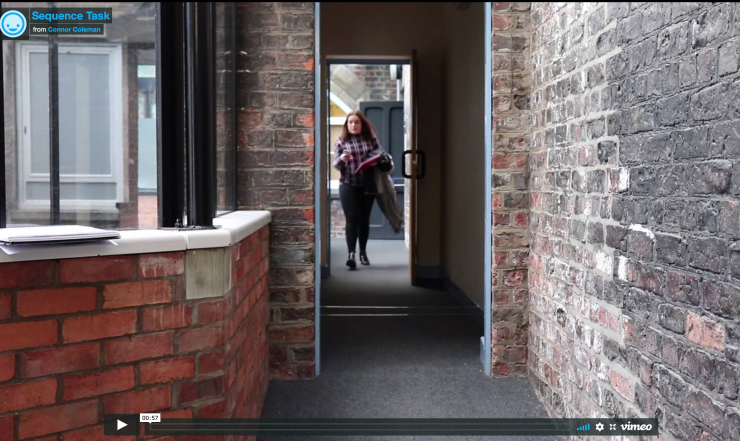We had to produce a sequence task each in a group of three with a maximum duration of 1’00”. We only had a 3-hour timetabled slot for each of us to shoot our task so being productive in this time was key. I was working in a group of three to produce this task so we allowed each other an hour each.
I decided to produce a story board to ensure that I knew exactly what shots I needed when it was time to record and this allowed me to take full advantage of the time slot. Schenk (2015 p.116) suggests that a storyboard should include frames, shots, location, cast, set and props. I included these on my storyboard and this plan allowed me to create the final product that I had planned. When I arrived on the set to shoot I presented by storyboard to everyone I was working with so that they were aware of my vision and how I wanted my final product to look. This allowed us to capture exactly what I had planned and also ensure we were productive in my limited time slot.
Hughes (2012 p.135) suggests that when you arrive to shoot the first thing you should do is find a good staging area. This is where all the equipment that we booked out is stored to ensure it is safe, organised and there are no tripping hazards. This was the first thing I did when I arrived on the set.
There is a simple sequence to follow when you are designing shots or planning the storyboard (Hughes 2012 p.121). This starts with an establishing shot, in which I portrayed the room before anyone was in the shot. Then you tell the story through shots that you feel are appropriate which I demonstrated the actor being late through various shots. I used action shots and close-ups to show the emotion of the actor, which portrays the story to the viewer. Then you can add cutaways which I used as my actor was walking through doors, I ensured these shots were quick and fast paced to portray the story, in which the person was late.
At the editing stage I decided to edit the names on all my shots to a chronological order that I could understand. This made it very easy to edit as my shots were neatly organised. However, at this stage I did notice that I only had a limited amount of footage and this made it difficult to ensure that my final product was 1” minute in duration. I am now aware that when you are at the production stage you should try and get as much footage as possible, even if you think you have enough just to be safe.
Bibliography
Hughes, M. (2012) Digital Filmmaking for Beginners – A practical guide to video production. USA, McGraw-Hill Companies.
Schenk, S. and Long, B. (2015) The Digital Filmmaking Handbook 5thed. Boston, Cengage.
